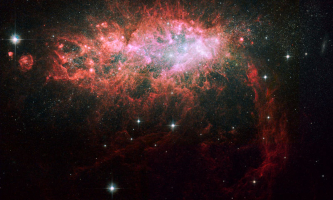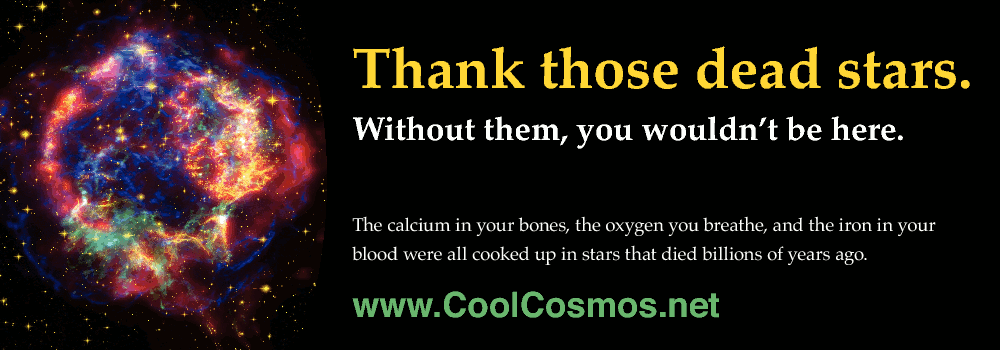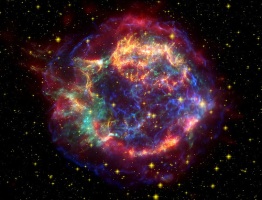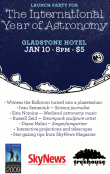![]() Listen to one Toronto astronomer explain why she's so interested in dead stars.
Listen to one Toronto astronomer explain why she's so interested in dead stars.
What do your atoms tell you about the history of the universe? Quite a lot if you know what you're looking for. It turns out we're all part of a larger galactic ecosystem that recycles atoms and makes life possible.
We know that the everyday objects that surround us – rocks, trees, pizzas – are all made of atoms. But where do those atoms come from?
Over 13 billion years ago, our universe was cooling down from its fiery beginning, known as the Big Bang. At that time the universe was a white – hot soup of fundamental particles. It was too hot for individual atoms to exist. Things changed abruptly when the universe cooled enough to allow electrons to be captured by protons. When paired together, a proton and an electron make the simplest kind of atom: hydrogen. The universe's supply of hydrogen atoms dates back to this very early beginning.
A few other kinds of atoms also formed during this period after the Big Bang, including helium, but not the rich diversity of atoms we know today. For example, none of the atoms we associate with life, including carbon, nitrogen and oxygen, had formed yet. The universe was a cold, dark place filled mostly with hydrogen gas. It was not a promising cosmic environment for life. An extra step was required to get to the universe we know today.

A burst of star formation in a nearby galaxy. Credit: NASA, ESA, the Hubble Heritage Team (STScI/AURA), and A. Aloisi (STScI/ESA).
That extra step was the birth of stars. After the universe had cooled enough, gravity took over and began pulling the hydrogen into large clumps. Within the clumps, dense concentrations of gas grew hot enough to ignite nuclear reactions. For the first time, newborn stars were lighting up the universe. Today, the light from stars is the most obvious feature of the visible universe.
Inside stars, the temperatures and densities are high enough to form carbon, nitrogen, oxygen and many other kinds of atoms. When these stars use up their fuel and die some of those atoms are released into space where they can be incorporated into future generations of stars and planets. Many of the atoms that make up your body are recycled from previous generations of stars.
Stars that are much larger than our sun have a tendency to create larger, heavier atoms. They also tend to go supernova, which means they end their lives by exploding violently. During a supernova explosion there is enough energy available to make every kind of naturally occurring atom, including gold, platinum and uranium. The explosion hurls these atoms out into space, enriching the clouds of gas and dust where new stars are forming.
When a cloud of material turns itself into stars it usually forms a few massive stars and many smaller stars. It's likely that our solar system originated in a cloud that included some massive stars. Those massive stars left their mark on our solar system by depositing their atoms just as our solar system was forming. Without those dead stars, life as we know on Earth would not have the raw materials to exist. Without them we would also not have a civilization based on the use of metal atoms like iron, copper, silver and gold.
Lately astronomers have begun to find evidence of planets circling around other stars. The more planets that are discovered, the more it is becoming clear that the stars that have planets also tend to have more heavier atoms. It seems that the presence of these atoms in a young solar system may somehow be important to the planet-forming process. In the early days of the universe, planets may have been rare. Certainly, planets like Earth would not have been possible until a few generations of massive stars had come and gone. In more ways than one, our lives are tied to the births and deaths of stars.
Select another story to learn more about how you are connected to the cosmos!















